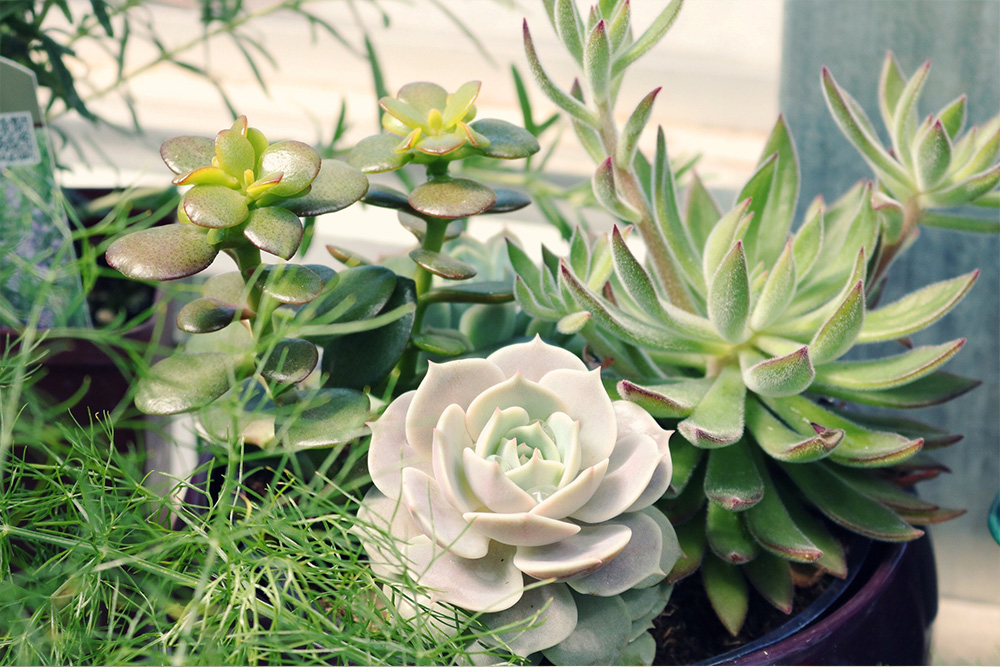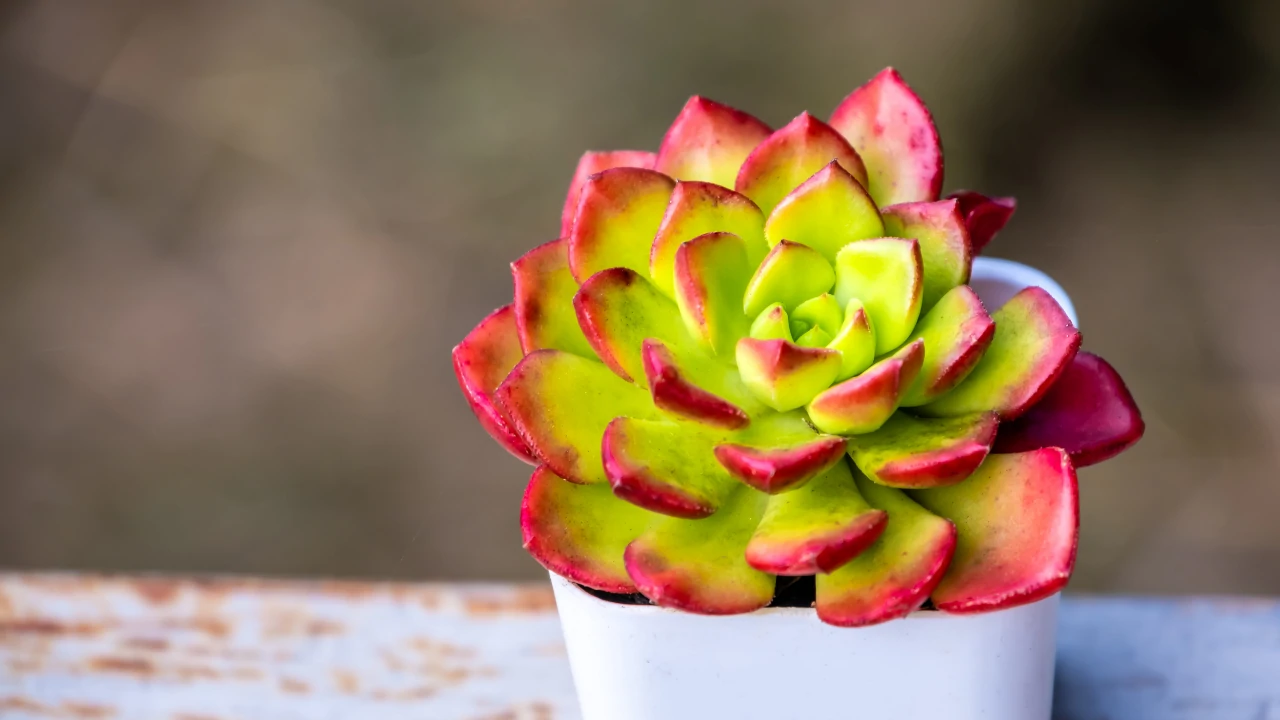It’s normal to not be familiar with a plant’s stress level. But you should know whether or not your succulent can go into shock. Otherwise, you might lose the plant soon.
So, what are the reasons behind succulents shock stress?
For starters, succulents can go into shock because of nutrition deficiency in their soil. Then overexposure to the sun is another big reason. Plus both overwatering or underwatering can cause succulent shock stress. Lastly, physical damage from transplanting is responsible for the shock too.
Now, succulent shock syndrome is pretty dangerous. Therefore, you’ll need more info than this. And we’ve provided exactly what you need which includes the reasons and recovery.
Therefore, let’s dive into the details!
What Causes Succulents to Go into Shock?
Succulents going into shock can seem like a new thing to you. But it’s not a new term in the world of gardening.
Succulents can go into shock just how humans do. However, there are some factors responsible for this situation-
Lack of Important Nutrients

The first factor is lack of nutrition. Now, to live a good life, succulents do need nutrients such as nitrogen, phosphorus, etc.
But if the plant doesn’t get a sufficient amount of these, it’ll start getting stressed. And this will lead it to go into a shock.
Now, during this time, the succulent will show some specific signs. These will help you understand that your plant is lacking nutrients.
Firstly, you’ll see the leaves of the succulents wilting. After that, the leaves will start discoloring. For example, you’ll come across mostly yellow leaves. This color appears mainly because of the lack of nitrogen.
Then with time, the plant will just get weaker and weaker. So, if you don’t act quickly, your poor succulent will die.
Solution
Now, firstly, you have to determine whether or not nutrient deficiency is to blame. To do that, you’ll need to do a soil test.
Because this will provide an accurate result. So, instead of just relying on the visual changes, we suggest doing this test.
Furthermore, the test will let you know, which nutrient the succulent is missing. Also, unlike a DIY soil test, the kit will tell you how much of that nutrient is lacking.
Now, you can get the soil tested from a lab. However, if you don’t have any labs nearby, you can do it yourself. You’ll just need a soil test kit. So, here are some amazing recommendations regarding the test kits-
After getting the kit, just follow the instructions said on it. And you can easily find out how much of which nutrients your succulent needs.
Now, once you figure that out, you’ll have to move on to fertilizers. Because only fertilizers can bring the nutrient level back to normal.
So, which fertilizers should you use?
Well, that depends on the result. For example, if the plant is lacking nitrogen, you’ll have to use a nitrogen-rich fertilizer. Or you can even add a well-balanced NPK to the soil.
However, always remember to dilute the fertilizer before feeding the plant. A proper ratio is 1 teaspoon of the fertilizer and 1 gallon of water. Apply the mixture to the soil after every 15-20 days.
Lastly, remember to properly fertilize your succulent from now on. This will help you to avoid nutrition deficiency.
Overexposure to the Sun
Now, another common reason is too much sunlight. Yes, succulents love direct sunlight.
However, too much of anything isn’t good. Therefore, overexposure to the sun can easily get your succulents into shock.
But it’s true that some specific succulents can tolerate full sunlight. But most can’t survive extreme sunlight for days. Because this makes their chlorophyll break down in the leaves. So, in conclusion, overexposure to sunlight leads them to have brown, burnt leaves.
Solution
The solution is quite simple. You have to relocate your succulent first. If the plant is under direct sunlight, it’s about time you remove it from there.
You’ll have to place it under indirect light. For example, keep it 3 meters away from direct sunlight or any other light source.
Then to help it recover from shock mix 2 teaspoons of plain sugar with 16 ounces of water. Next, add the mixture to the soil of the succulent. This is a really effective way to bring back your plant from the shock.
Too Much and Too Little Water
Succulents don’t need that much watering. So, if you’re providing too much water than necessary, the plant can go under stress. Because it isn’t familiar with overwatering.
It’ll show you signs by its soft and squishy leaves. Plus it can even suffer from root rot. Overwatering is never a good thing for succulents. Because too much water can be the cause of their death.
Then underwatering is also another equally problematic issue. Even though succulents live without water for longer than most other plants. It still can’t go without water forever.
Nonetheless, without water, the plant will start stressing out and eventually go into shock. And it’ll show you that it’s suffering through its dried-out leaves and stems.
Solution
So, how to fix the situation?
Firstly if you have overwatered the plant-
Let the standing water drain out as fast as possible. You can also replant the succulent. This way it’ll be out of the wet soil.
Next, in the case of underwatering, you have to start watering the plant quickly. While watering, make sure to water till it comes out of the holes of the pot. After you’re done, note down the date. Because you have to water the plant again after a week.
Hurting the Plant while Transplanting
Now, shock typically occurs while transplanting a succulent.
Well, this way you’re exposing it to a completely different environment. And new growing conditions can stress the plant out.
Furthermore, while transplanting the succulent, you can damage the root system. And if you didn’t know, the roots of the succulents are quite important. Thus, if they get damaged-
They won’t be able to extend themselves to absorb water and nutrients from the soil. This will cause the plant to receive an insufficient amount of energy for cell division. Hence, the plant will get into shock and stop growing.
Solution
The first solution is similar to that of overwatering. And that is- using the sugar and water mixture. Because it can help to ease the stress and shock to some extent. However, this option doesn’t always work.
So, the next thing on the list is letting the succulent recover and adjust itself. Succulents can adapt to the new growing medium if you give 3-5 days.
Once they have adjusted themselves, start watering the plant. To understand if they’re out of shock, observe them visually. For example, they’ll start healing themselves and become lively again once they’re out of shock.
How to Prevent Succulents from Going into Shock?
Now you know how stress is a common thing among plants. And how serious it can get. Therefore, you might want to how to avoid this situation in the future.
Well, we can’t guarantee that your plant won’t never in stress. But taking care of the plant properly can help you a lot to keep your succulent healthy and happy!
Thus, here are some tips to help you look after the plant-
- While transplantation, hold the plant with soft hands to avoid hurting it.
- Don’t pluck the succulent out of the pot while replanting. Instead, gently squeeze it out from the soil.
- Water the plant only when the soil is dry. To check soil dryness, use either your hand or a moisture meter.
- Don’t water the plant frequently. Watering every 7-14 days is good enough for a succulent.
- Place the plant where the temperature is 55-80 degrees Fahrenheit. To check the temperature, use a plant thermometer.
Also, checking the soil dryness of the succulent is a must. To get accurate results, we recommend using a moisture meter. Therefore, here are some suggestions regarding good moisture meters-
Now, just get your preferred one and always keep an eye on your precious plant!
FAQs
Question: How long does it take for succulents to recover from shock?
Answer: Well, the recovery time depends on what caused the shock. For example, your plant will 1-2 weeks to recover from transplanting shock. Then for common reasons like sun exposure, overwatering, it’ll take at least a week.
Question: What are the succulent shock stress symptoms?
Answer: When your succulent is under shock stress, it’ll showcase some common symptoms. Firstly, their leaves will start wilting and changing colors. You’ll see it shedding its leaves and flowers. Lastly, the plant will look sick, dull, and lose its vibrancy.
Question: What is sun stress?
Answer: Sun stress occurs when your plant is overexposed to the sun. Your plant might not be familiar with too much heat and light. Therefore, it starts stressing out.
Wrapping Up
Well, we’re out of information regarding succulents shock stress. So, hopefully, you have got your answers. By the way, pests can cause stress shock too. So, always keep pesticides to fight them.
Now, do let us know your thoughts. Good luck keeping your succulent safe!



